Top Deals on Hand Tool Knives: Your Ultimate Cutting Companion
When you're on the hunt for top-notch hand tool knives, you're diving into a realm of versatility, precision, and utility that spans across various domains of work and everyday life. These knives, in their varied forms, are indispensable tools with a rich history of functionality, and they continue to play a pivotal role in numerous applications. At Best Price On Knives Hand Tool, we offer a range of high-quality knives perfect for camping, outdoor sports, and DIY projects. Crafted with a robust metal casing and an aluminum facing, our knives are compatible with trapezium, angled, and readily available hook blades. A fine chef's knife is paramount for swift and safe kitchen prep work. With its lengthy blade, it's ideal for chopping, dicing, mincing, and gracefully slicing a roast bird or tender steak for serving. Our collection offers a variety of sizes, ranging from a compact six inches to a generous fourteen inches, allowing you to select the one that best fits your hand.Knife Varieties for Every Need
Pocket Knife:
The pocket knife is a versatile folding blade designed for everyday carry. It's sleek, lightweight, and effortlessly slips into your pocket. Pocket knives often feature an array of blade styles, including drop point, clip point, or tanto, and they are perfect for a wide range of cutting tasks, from cracking open packages to swiftly slicing through rope.Utility Knife:
Utility knives are usually retractable and engineered for precision cutting. Equipped with replaceable blades, they excel in tasks that demand sharp, disposable edges. These knives are the go-to choice in construction, crafting, and DIY ventures.Chef's Knife:
The chef's knife, also known as a cook's knife, is a kitchen essential. With its broad, curvaceous blade that tapers to a razor-sharp point, this knife shines in chopping, slicing, and dicing fruits, vegetables, and meats. It's the must-have tool for both professional chefs and home cooks.Boning Knife:
Boning knives are precision tools tailored for the delicate art of removing bones from meat, poultry, and fish. Sporting a narrow, flexible blade, they allow for meticulous cuts and maneuverability. These knives are indispensable in butchery and culinary arts.Fillet Knife:
Fillet knives are specialized instruments for filleting fish. With their thin, flexible blades, they make it a breeze to remove skin and bones from fish while preserving the meat. Anglers and seafood chefs swear by these.Hunting Knife:
Hunting knives are rugged, versatile tools wielded by hunters for field dressing, skinning, and game processing. They typically feature a fixed blade with a sturdy handle, and may include features like gut hooks or serrated edges for specific tasks.Survival Knife:
Survival knives are engineered for outdoor adventures and emergency situations. They often boast a robust, full-tang construction, a razor-sharp blade, and a host of survival-focused features, including a fire starter, whistle, and serrated edge.Key Features of Hand Knives
- Blade Material: Hand knives are meticulously crafted from a variety of materials, with stainless steel and high-carbon steel being common choices. These materials offer longevity and razor-sharp performance.
- Blade Shape: Different knife designs and blade shapes are tailored for specific tasks. For instance, the chef's knife boasts a broad, curvaceous blade for expert chopping, while the utility knife sports a narrow, straight blade for precision cutting.
- Handle Design: The handle of a hand knife is thoughtfully designed for a comfortable grip. Materials like wood, plastic, or rubber are used for handles, ensuring a secure hold during use.
- Folding Mechanism: Many hand knives, especially pocket knives, feature a folding mechanism that securely tucks the blade within the handle when not in use.
- Locking Mechanism: Folding knives often include a locking mechanism to ensure the blade remains firmly in place during use, reducing the risk of mishaps.
Benefits of Using Hand Knives
- Versatility: Hand knives serve as versatile tools across various applications, including cutting, slicing, carving, and even self-defense.
- Precision: These knives provide precise control, allowing users to make accurate cuts and adjustments in different materials.
- Portability: Many hand knives are compact and lightweight, making them effortlessly portable for everyday carry or outdoor adventures.
- Maintenance: With proper care and maintenance, hand knives can retain their sharpness and functionality over an extended period.
- Utility: Hand knives find applications in diverse fields, from culinary and craftsmanship to outdoor pursuits and emergency scenarios.
Safety Tips for Handling Hand Knives
- Blade Sharpness Awareness: Always handle the knife with care, being conscious of the blade's sharpness. Avoid touching the blade's edge.
- Appropriate Cutting Surface: Use a suitable cutting surface, such as a cutting board or workbench, to safeguard the knife's edge and prevent accidents.
- Hand Positioning: Ensure your fingers and hands are clear of the blade's path when cutting. Maintain proper hand positioning and a secure grip.
- Cutting Direction: Pay close attention to the direction of your cuts, ensuring the blade moves away from your body, not towards it.
- Knife Storage: When not in use, store hand knives safely, whether in a knife block, on a magnetic strip, or within a knife sheath. Avoid leaving them loosely in drawers or containers.
- Maintenance: Routinely inspect the knife for damage or signs of wear. Keep the blade sharp, as a dull blade can lead to accidents due to increased effort required during cutting.
- Cleaning: After each use, ensure the knife is cleaned and dried to prevent corrosion and maintain blade hygiene.


